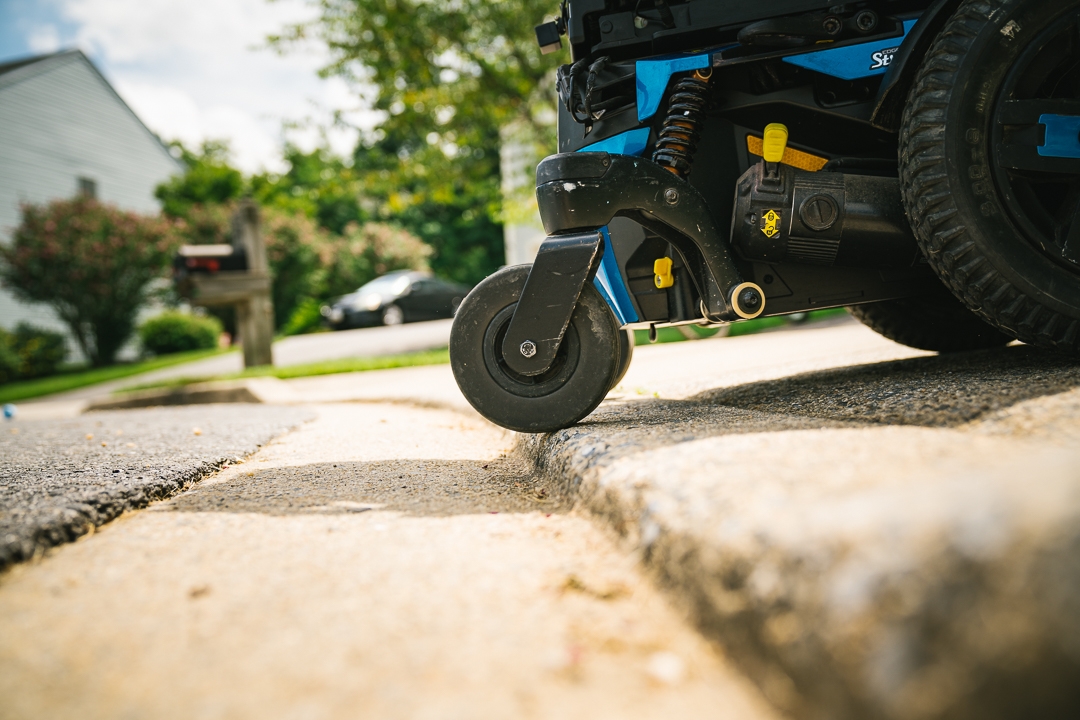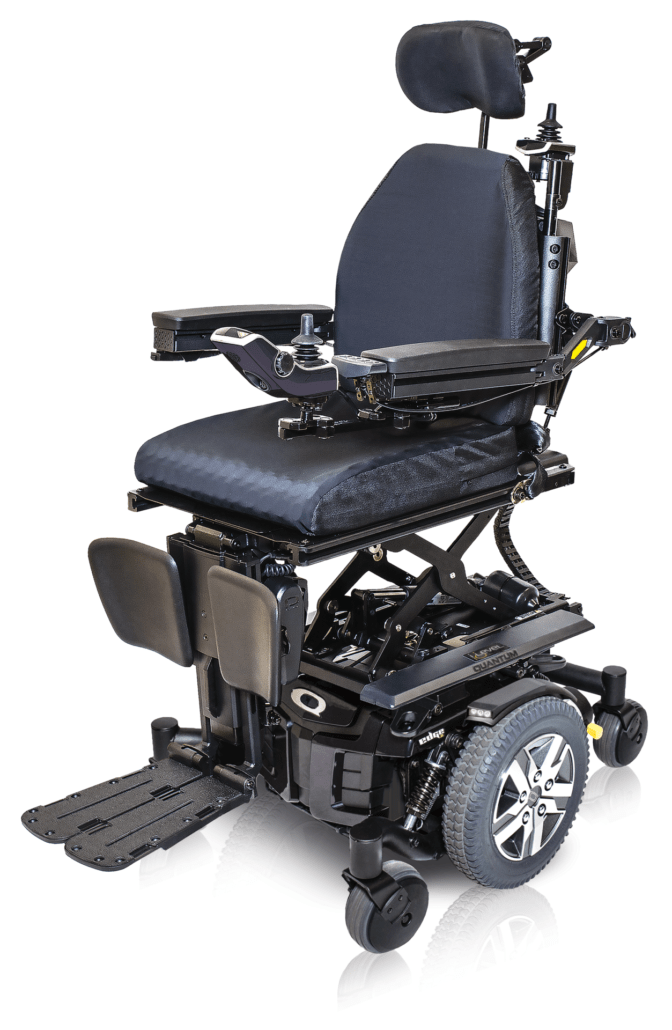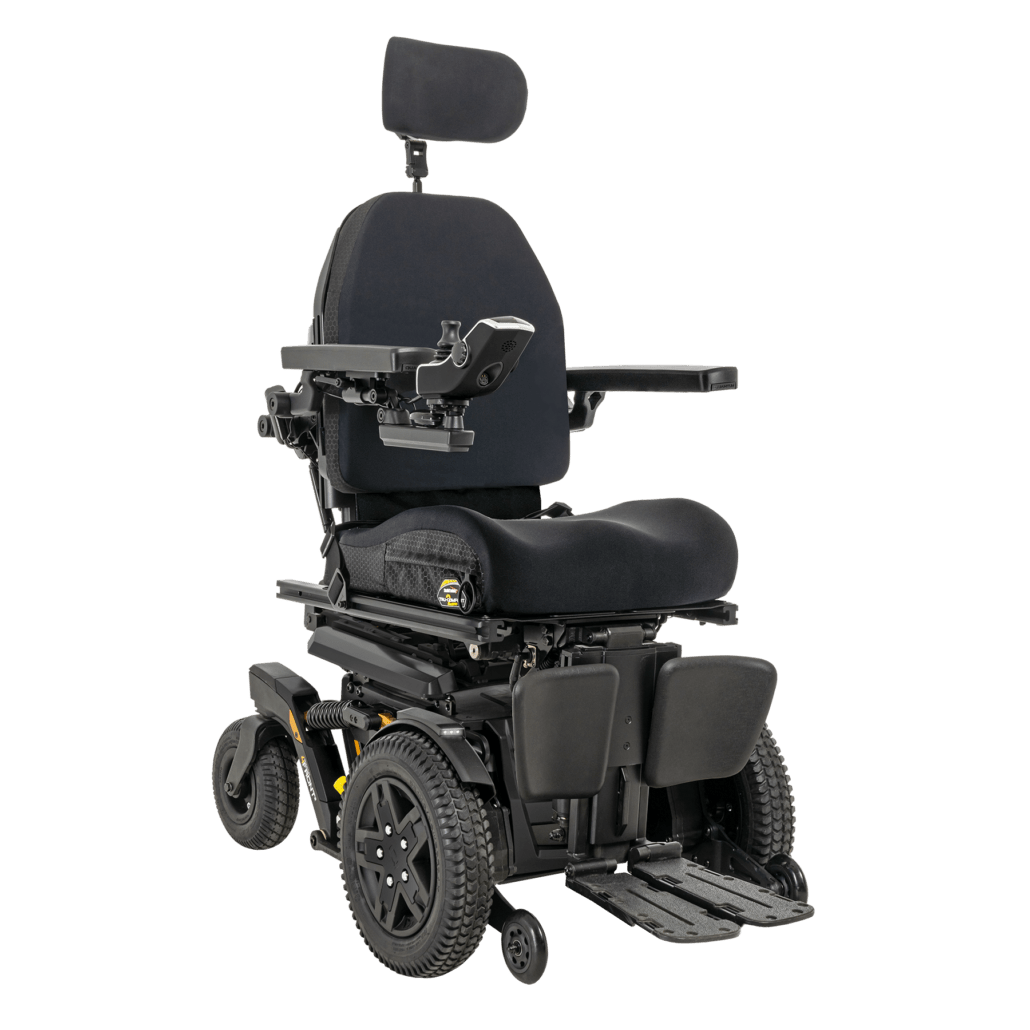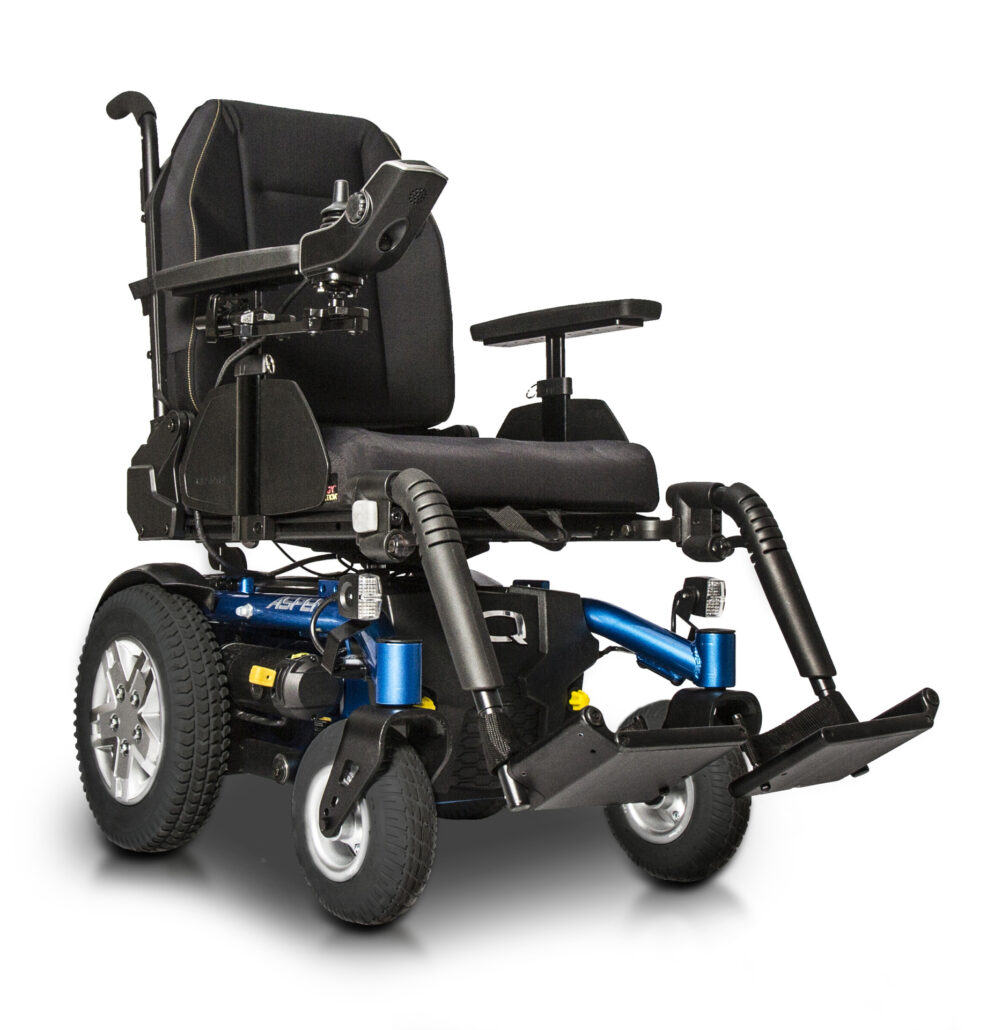Front-wheel, mid-wheel and rear-wheel drive
Drive wheel configurations
When selecting an power chair base, one of the most important factors to consider is drive wheel configuration. Front-wheel, mid-wheel and rear-wheel drive each have their own advantages. A wheelchair user should consider his or her medical needs, as well as how their motorized wheelchair will be used when selecting a base and drive wheel configuration.


Q6 Edge Z
Mid-wheel 6
With a mid-wheel configuration, the drive wheels on a power base are literally in the middle of the power wheelchair. The user’s center of gravity is almost even with the center of the drive wheels. This design creates the tightest turning radius. Mid-wheel drive motorized wheelchairs can do a complete 360-degree turn. This maneuverability is extremely beneficial when using an electric wheelchair in the home. Navigating doorways and narrow spaces is much easier with a mid-wheel drive wheelchair.
In terms of stability, mid-wheel drive electric wheelchairs are the most stable. These electric wheelchairs have six wheels on the ground, including two drive wheels and four caster wheels. This configuration provides greater stability to the base. A mid-wheel drive power wheelchair has caster wheels on the front and back of the base, helping to prevent the electric wheelchair from tipping forward or backward.
Motorized wheelchairs with mid-wheel drive also have good traction on most surfaces, inclines and side slopes. Plus, mid-wheel drive electric wheelchairs climb obstacles well, such as curbs and small bumps. Mid-wheel drive motorized wheelchairs are the most intuitive, offering a shorter learning curve, particularly for new power wheelchair users.
Mid-wheel drive electric wheelchairs offer many advantages and are a great choice for users who need more stability or will mostly use the power wheelchair in the home.
Front-wheel drive
Front-wheel drive is extremely beneficial for many reasons. One of the biggest advantages is there is more force distributed to each of the four tires, because there are two fewer tires in contact with the ground, unlike with other drive wheel configurations. The greater force increases traction, enabling the front-wheel drive electric wheelchair to perform well when driving over soft terrain, grass or uneven gravel. In addition, the drive wheels are the first to encounter an obstacle. The large tires “grab” an obstacle like a curb or a step and go over it, pulling the rest of the chair with them.
Another benefit of front-wheel drive is that a wheelchair user’s feet can be positioned easily because there are no front caster wheels on the motorized wheelchair. The user’s feet can be closer to his or her body for comfort. Plus, 90-degree footrests can be added.
Front-wheel drive power wheelchairs have a lower seat-to-floor height. This allows wheelchair users to fit more easily under standard size tables and desks, enhancing their inclusion and social interaction. A front-wheel drive design is also beneficial indoors. It can easily navigate tight corners within the home.
With so many advantages, front-wheel drive electric wheelchairs can truly benefit many individuals.

4Front® 2

Aspen
Rear-wheel drive
Rear-wheel drive motorized wheelchairs offer many benefits to users. Rear-wheel drive electric wheelchairs are equipped with two large drive wheels on the back of the base, and two casters on the front of the wheelchair base. The placement of the drive wheels is the source of the electric wheelchair’s power. This extra power is ideal for more aggressive outdoor terrain. Plus, rear-wheel drive has more power to propel the wheelchair forward in softer terrain. A rear-wheel power wheelchair handles grade changes more easily to provide a smoother ride. Typically, rear-wheel drive electric wheelchairs are equipped with independent suspension or shock absorbers on all wheels to ensure a more comfortable ride experience.
Another advantage of a rear-wheel electric wheelchair is that it provides excellent control. With a rear-wheel drive configuration, motorized wheelchairs turn slower, giving the user ample time to adjust their joystick to successfully complete the turn.
Rear-wheel drive configuration provides excellent stability. The base on a rear-wheel drive electric wheelchair is larger, and the weight of the chair is focused where the drive wheels are located.
With enhanced control, a smoother ride and greater stability, rear-wheel drive power wheelchairs can benefit many individuals.


